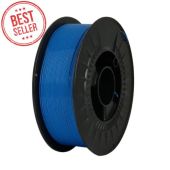3d Printer Nozzle Guide: What Size Should You Use?
Standard and Alternative Sizes
3D printing has transformed how we prototype, design, and manufacture objects—from hobbyist models to industrial components. One critical factor that influences print quality, speed, and strength is the nozzle size. The nozzle is the final point where melted filament is extruded, and its diameter directly impacts the outcome of your prints.
The 0.4 mm 3d printer nozzle is the most commonly used size and comes standard with most machines. It offers a solid compromise between detail, speed, and reliability, making it a suitable choice for general-purpose printing.
Alternative nozzle sizes range from 0.2 mm to over 1.2 mm:
- 0.2–0.3 mm: Ideal for printing miniatures and highly detailed



Please complete your information below to login.
Sign In
Create New Account